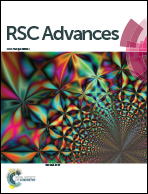Aminonaphthalimide-based pyridinium probes for selective fluorescence sensing of maltose in aqueous media and living cells†
Abstract
New aminonaphthalimide-based pyridinium podands as “turn-on” fluorescent probes were designed and synthesised for selectively sensing maltose in aqueous media and living cells.


 Please wait while we load your content...
Please wait while we load your content...